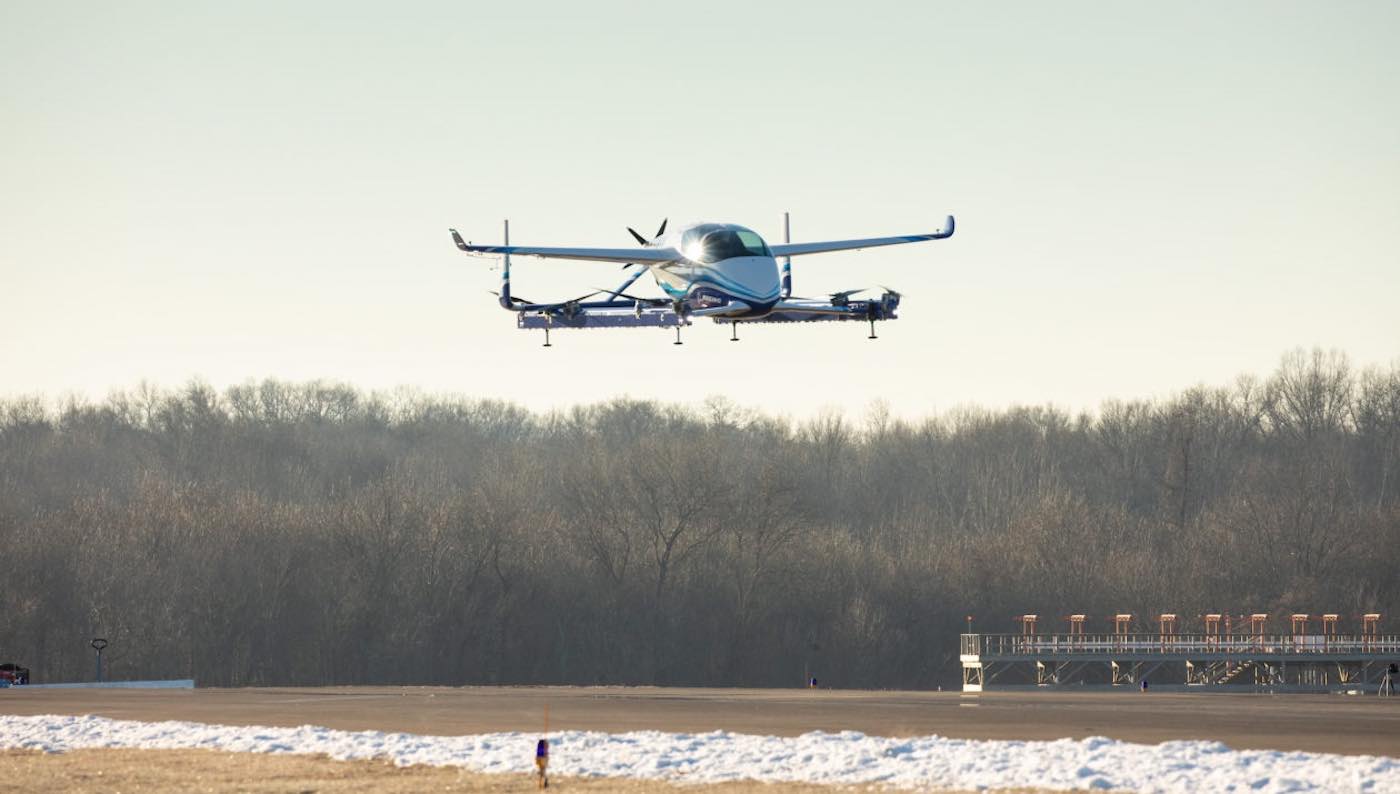Boeing has just announced that they HAVE completed a successful first test flight of its autonomous passenger air vehicle (PAV) prototype.
The PAV prototype completed a controlled takeoff, hover, and landing during the flight, which tested the vehicle’s autonomous functions and ground control systems from an airport in Manassas, Virginia.
Future flights will test forward, wing-borne flight, as well as the transition phase between vertical and forward-flight modes. This transition phase is typically the most significant engineering challenge for any high-speed VTOL aircraft.
“In one year, we have progressed from a conceptual design to a flying prototype,” said Boeing Chief Technology Officer Greg Hyslop. “Boeing’s expertise and innovation have been critical in developing aviation as the world’s safest and most efficient form of transportation, and we will continue to lead with a safe, innovative and responsible approach to new mobility solutions.”
RELATED: UK Trains Will Run On Hydrogen Power Within Three Years and Produce Zero Emissions
Powered by an electric propulsion system, the PAV prototype is designed for fully autonomous flight from takeoff to landing, with a range of up to 50 miles (80.47 kilometers). Measuring 30 feet long (9.14 meters) and 28 feet wide (8.53 meters), its advanced airframe integrates the propulsion and wing systems to achieve efficient hover and forward flight.
“This is what revolution looks like, and it’s because of autonomy,” said John Langford, president and chief executive officer of Aurora Flight Sciences, the Boeing subsidiary responsible for designing the aircraft. “Certifiable autonomy is going to make quiet, clean and safe urban air mobility possible.”
The test flight represents the latest milestone for the company’s urban mobility department: Boeing NeXt. The division works with regulatory agencies and industry partners to lead the responsible introduction of a new mobility ecosystem and ensure a future where autonomous and piloted air vehicles safely coexist.
LOOK: Elon Musk’s First Ultra-Fast Underground Transit Tunnel Will Open to the Public in December
The new aircraft is a likely candidate for Uber’s developing “air taxi” initiative. According to the ride-sharing company, the Uber Air network will initially launched in Dallas-Fort Worth and Los Angeles with commercial services expected to be made publicly available as soon as 2023.
In addition to the PAV, the Boeing NeXt portfolio includes an unmanned fully electric cargo air vehicle which is designed to transport up to 500 pounds (226.80 kilograms) and other urban, regional and global mobility platforms. The cargo craft completed its first indoor flight last year and will transition to outdoor flight testing in 2019.
“Boeing was there when the aviation industry was born and in our second century, we will unlock the potential of the urban air mobility market,” said Steve Nordlund, vice president and general manager of Boeing NeXt. “From building air vehicles to airspace integration, we will usher in a future of safe, low-stress mobility in cities and regions around the world.”
(WATCH the sneak peek of the vehicle in action below) – Photo by Boeing
BREAKING: It’s another first for us. Along with @AuroraFlightSci we’ve successfully tested our passenger air vehicle. We continue our progress towards a safe and sustainable urban mobility ecosystem. #TheFutureIsBuiltHere pic.twitter.com/hwuw4d5jmz
— The Boeing Company (@Boeing) January 23, 2019
Be Sure And Fly This Exciting Piece Of News to Your Friends On Social Media




















